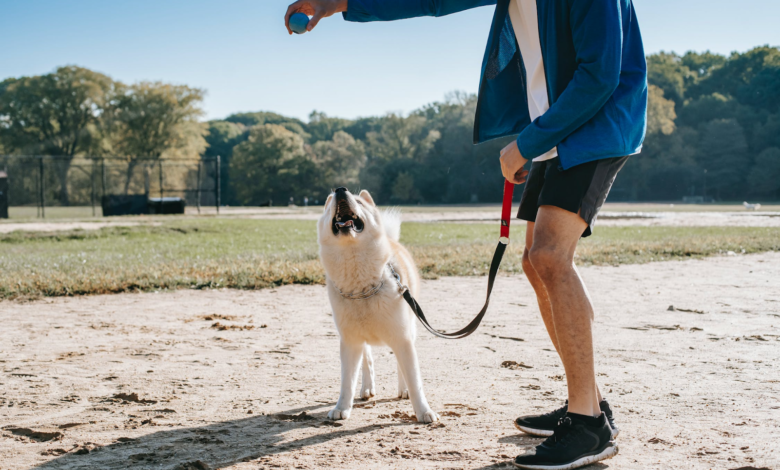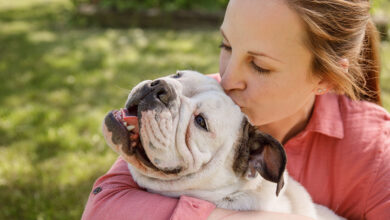Why Do Dogs Bite the Leash?

Owning a dog brings immense joy and companionship, but it also comes with its fair share of challenges. One common behavior that many dog owners encounter is leash biting. If you’ve ever wondered why your furry friend insists on gnawing at their leash during walks, rest assured, you’re not alone. In this article, we’ll delve into the reasons behind this behavior and explore effective ways to stop your dog from biting the leash.
Understanding the Behavior:
Dog lead biting is a common behavior that can stem from various reasons, including:
1. Teething: Puppies, in particular, may engage in leash biting as a way to soothe their teething discomfort. Just like human babies, puppies experience teething, and chewing provides relief to their sore gums.
2. Playfulness: Dogs, being naturally playful creatures, may see the leash as an extension of their toys. Biting and tugging at the leash can be their way of expressing excitement and playfulness.
3. Attention-Seeking: Some dogs may resort to leash biting as a means of seeking attention. If they notice that leash biting results in a reaction from their owner, even if it’s negative attention, they may continue the behavior.
4. Anxiety or Stress: Dogs leash biting may be as a response to anxiety or stress, particularly in unfamiliar or uncomfortable environments. This behavior may serve as a coping mechanism to alleviate their unease.
Addressing Leash Biting:
Now that we understand some of the reasons behind leash biting, let’s explore effective strategies to stop your dog biting the leash:
Provide Appropriate Chew Toys: If your dog is teething, offering appropriate chew toys can redirect their biting behavior away from the leash. Ensure the toys are safe and suitable for your dog’s size and breed.
Positive Reinforcement: Reinforce positive behavior by rewarding your dog when they walk without biting the leash. Use treats, praise, or a combination of both to encourage the desired conduct.
Use Deterrents: Applying safe and dog-friendly deterrents to the leash, such as bitter-tasting sprays, can discourage your dog from biting. Dogs generally dislike the taste, and over time, they may associate leash biting with an unpleasant experience.
Training Exercises: Engage in leash training exercises to teach your dog appropriate walking behavior. Use commands like “leave it” or “drop it” and reward compliance. Consistency is key to reinforcing good habits.
Address Anxiety or Stress: If a dog biting their leash is a result of anxiety or stress, identify and address the underlying causes. Gradually expose your dog to new environments, people, and experiences to build their confidence and reduce anxiety.
Seek Professional Help: If the leash biting behavior persists or is accompanied by other behavioral issues, consider seeking guidance from a professional dog trainer or behaviorist. They can provide personalized advice and training techniques based on your dog’s specific needs.
How To Prevent And Address Leash Biting
Exercise: Proper exercise and mental stimulation techniques are crucial to stop your dog biting their leash. Dogs need physical activity to burn off excess energy and mental stimulation to keep their minds engaged. Make sure your dog gets proper dog training, regular walks, play sessions, and interactive toys that challenge them mentally.
Desensitization: Desensitization and counterconditioning methods can be effective for dogs who bite the leash out of fear or anxiety. Gradually expose your dog to the sight and sound of a leash while using positive reinforcement techniques such as treats or praise. This helps create a positive association with the leash, reducing fear or anxiety.
Impulse Control: Teaching impulse control is essential for addressing overexcitement or frustration-related leash biting. Use obedience training exercises like “sit” or “stay” before putting on the leash. This helps your dog learn self-control and patience, making it easier for them to resist the urge to bite.
Remember, consistency is key when trying to address leash biting behavior in dogs. Always reward desired behaviors and provide clear boundaries through proper training techniques.
Conclusion:
Understanding why dogs bite their leashes is crucial to addressing the behavior effectively. By employing positive reinforcement, providing appropriate alternatives, and addressing any underlying issues, you can teach your dog to walk calmly and enjoyably on a leash. With patience, consistency, and a bit of training, you can transform leash biting into a distant memory and enjoy stress-free walks with your furry companion.



